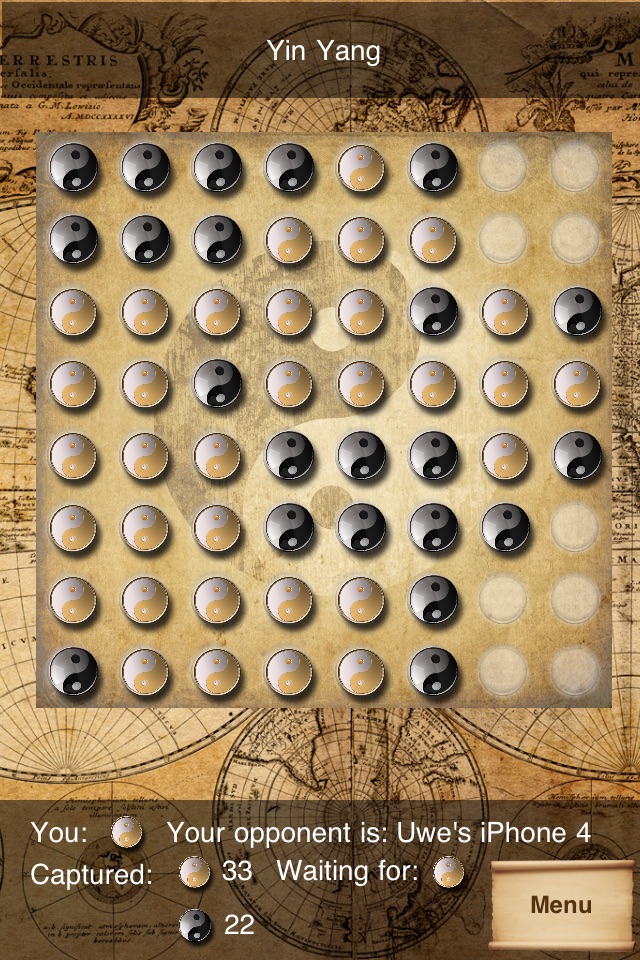
In Yin and Yang you have to master the dualities Yin and Yang. You start out with quiescence of the elements, but you have to change faith to your advantage. You need a good strategy to break the quiescence
to your advantage. But be careful, your opponent will try the same thing and you might end up loosing most of you Taijitu pieces that symbolize your faith.
- Yin and Yang takes place between two players. The first player symbolizes the Yin, the second player symbolizes the Yang
-It is played on an 8x8 board of 64 squares. There are 64 Taijitu pieces, colored black for player representing Yin and gold for the player representing Yang.
- In the basic game, the board is set up initially with two Taijitu pieces for each player. The advanced games (Challenge and Master) have more pieces on the initial board)
- Yang (black Taijitu) makes the first moved. Players are then taking alternate turns.
- When making your move, you can change faith by forcing pieces on the board to change from Yin to Yang or Yang to Yin.
- Goal of the game is, once all the pieces are placed to have more pieces than your opponent on the board.
- At each turn a player must place a Taijitu piece with their color face up on one of the empty squares of the board, adjacent to an opponents Taijitu piece, such that one or
more straight lines (horizontal, vertical or diagonal) are formed from the newly placed disc, through one or more of the opponents discs and up to other Taijitu pieces of their own color already
on the board. All the intervening Taijitu pieces of the opponents color are flipped to the faith (Yin/Yang) of the newly laid Taijitu piece.
-Taijitu pieces may be flipped from one faith to the other but once played are not moved from one square to another or removed from the board.
- Players may not pass unless there is no valid move available to them in which case they must pass.
-Play continues until neither player is able to move, usually when all 64 squares have been played.
- The player with most piece of their faith wins
History
In Chinese philosophy, the concept of yin yang, normally
referred to in the West as yin and yang) is used to describe how polar or seemingly contrary forces are interconnected and interdependent in the natural world, and how they give rise to each other
in turn. The concept lies at the origins of many branches of classical Chinese science and philosophy, as well as being a primary guideline of traditional Chinese medicine, and a central principle of
different forms of Chinese martial arts and exercise, such as baguazhang, taijiquan (tai chi), and qigong (Chi Kung) and of I Ching divination. Many natural dualities — e.g. dark and light,
female and male, low and high, cold and hot — are thought of as manifestations of yin and yang (respectively).
Yin yang are complementary opposites that interact within a greater whole, as part of a dynamic system. Everything has both yin and yang aspects, but either of these aspects may manifest more strongly
in particular objects, and may ebb or flow over time. The concept of yin and yang is often symbolized by various forms of the Taijitu symbol, for which it is probably best known in western cultures.
There is a perception (especially in the West) that yin and yang correspond to good and evil (not respectively). However, Taoist philosophy generally discounts good/bad distinctions and other
dichotomous moral judgments, in preference to the idea of balance. Confucianism (most notably the philosophy of D. Zhongshu, circa the second century BCE) did attach a moral dimension to the idea
of yin and yang, but the modern sense of the term largely stems from Buddhist adaptations of Taoist philosophy.
----------------------
This game is enabled for GameCenter and allows you to play against other players through GameCenter.


